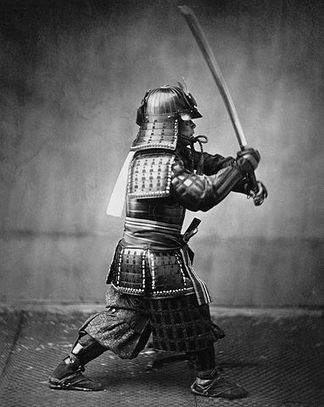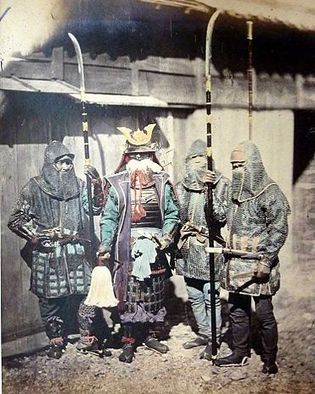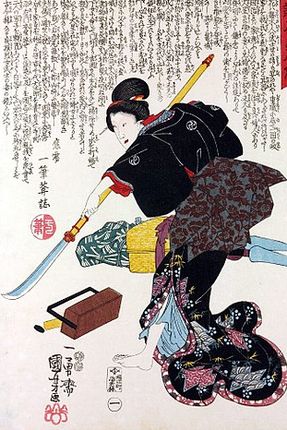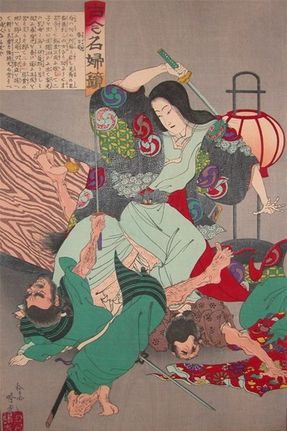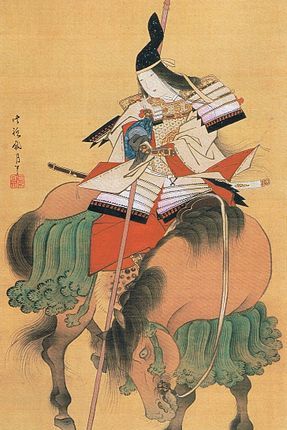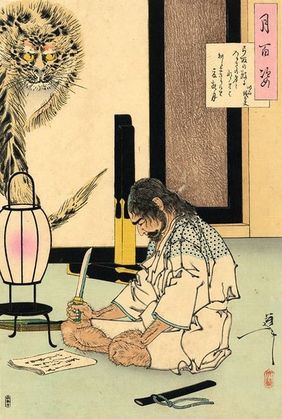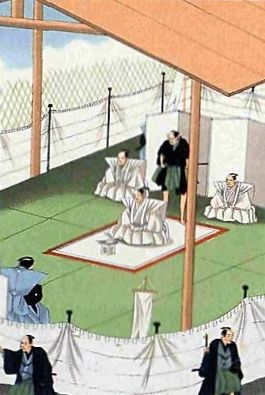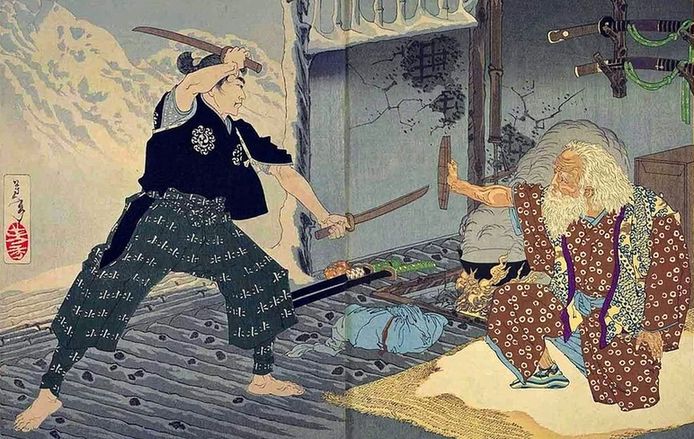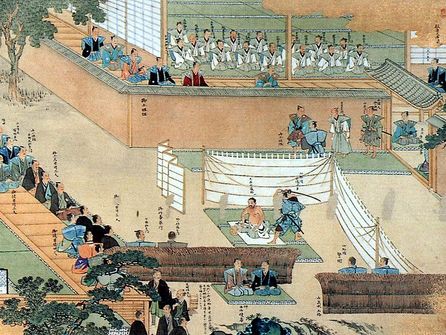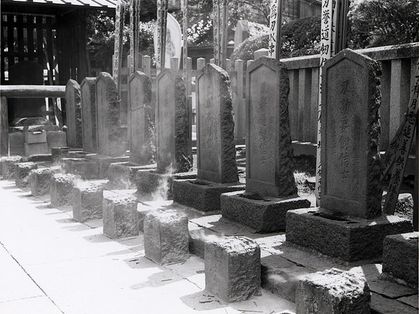Samurais were a bit like Western knights. They were honorable warriors who fought for lord and country. Small wonder they have captured the imagination of millions and have been widely romanticized in books and movies. But samurais really existed.
And here are 13 cool facts you probably did not know about the Japanese samurais:
1. The beginning: samurais in private armies
In Japan, each province had a governor. But the governor had to be in the capital, serving the emperor. So their lands were semi-abandoned, prey to bandits and bad neighbors. Enter the samurais.
In the 10th century, the provincial lords rose private armies to protect their lands. The warriors who served in these armies became known as samurais.
Now, there were other soldiers in the Japanese Empire. The term Samurais was reserved for the men of these private armies.
And their noble lords, who were at the Imperial Court, were called daimyos.
As time went by, these private armies grew stronger, and by the 12th century, the daimyos did a sort of coup d’etat.
They kept the emperor as a figurehead, while real power went to one of the daimyos. This daimyo became a military dictator or shogun.
The shoguns set aside the traditional aristocracy. And in time, a new nobility rose, formed by the shogun, the daimyos, and their samurais.
In late medieval times, about 5 or 6% of the population of Japan were samurais.
2. Samurais thought decapitated heads made great gifts

Samurai fun fact numero dos: In battle, samurais decapitated their enemies.
And they later presented the severed heads to their lord, as gifts. The relationship between samurai and lord was a special and close one. Samurais always had a lord, and they swore allegiance and obedience to them.
The presentation of the heads was a highly ritualized ceremony.
First, the women cleaned the decapitated heads and combed their hair. They also blackened their teeth -in older times, black teeth were the sign of a distinguished man in Japan.
Then, they tagged the head with its corresponding name. Finally, they mounted the head on a spike.
Now, clean and presentable, the heads of the fallen enemies were ready to be given to the daimyo.
3. Samurais used ultra-sharp swords

Samurai’s swords were among the best in the medieval world. They had a very sharp edge.
During the tumultuous Sengoku period (1467-1567), some samurais would check if their swords were sharp enough by randomly beheading a passerby on the road.
It is not known how widespread this practice, appropriately called “cutting down at crossroads” (tsujigiri), was. In any case, it was abolished in 1597.
4. Two swords are better than one

There were three levels of samurai warriors.
The lowest ones, the gokenin, were vassals of the feudal lord. The middle ones were the goshi, who had their own land and lived in the countryside. And in the third and higher tier were the hatamoto, which were the banner men and were closer to the daimyo or shogun.
Samurai fun fact #4: The hatamoto were the only ones allowed to carry two swords (called daisho when together).
One sword was longer than the other. The longest was the katana that measured 60 cm (2 ft). The shorter one was the wakizashi that was 30 cm (1 ft) long. Both swords were slightly curved.
Samurais could also carry a small knife, tanto, as a backup weapon. Other typically samurai weapons were the bow and arrow.
Samurais learned martial arts, but the skills with the sword and the bow were deemed worthier. They fought on horseback.
5. Samurais loved dueling
Samurais considered that dueling was the most honorable way to fight. So during a battle, they would look for single, worthy enemies to duel with.
6. Samurais followed a strict honor code

A better-known samurai fact is that they followed a strict, unwritten honor code.
It was put in writing later on, in the 17th century, probably idealizing it a bit.
The honor code (bushido) was strongly influenced by Confucianism and, to a lesser extent, by Zen Buddhism.
Samurais were supposed to be honorable, brave, self-disciplined, respectful, and above all, loyal to their leader.
They were in sharp contrast with, say, the ninjas of the 15th century who were trained in a more “dishonorable” type of warfare. Ninjas would sneak into the enemies’ camp and use stealth, instead of frontal fighting, for assassinating and sabotaging.
Since honor was all-important for samurais, they could not stand being insulted. They decapitated anyone who did so.
7. Samurai’s daughters were skilled fighters
When samurais were away, which was quite often, their wives were in charge of the house/castle.
These female-led homes could be a temptation for bandits and enemies. So women of the samurai class learned fighting skills. That way, they could protect themselves, their families, and homes.
They learned a martial art called naginatajutsu. It used a long spear (ko-naginata) that had a blade on one end. The ko-naginata served to cut and push an enemy without getting too close. So it was perfect for women. They could keep their distance from the criminal and avoid being overpowered.
They also learned tantojutsu, another martial art (Japan had 18 at the time). It used a knife called kaiken.
A few of these women fell in love with fighting and became full-fledged warriors. They fought with the armies.
All women of samurai families were literate and well-educated.
8. Samurais popularized the tea ceremony

Originally, Buddhist monks drank tea to stay awake during meditation. But they soon turned the whole tea-serving process into a ritual.
Then, in the 15th century, a Zen monk called Zeami initiated shogun Yoshimasa into the tea ritual.
Yoshimasa was not so great as a shogun, but he was a cultured man that supported the arts. He immediately took a liking to the ritual and polished it, creating the tea ceremony.
He was also into flower arrangements (ikebana), tatami floors, Noh theater, and monochrome ink paintings. Soon, of course, his samurai court was also creating flower arrangements, using tatamis, and drinking tea.
And then, everyone else in Japan copied the trend-setting samurais.
These arts, along with the tatami floors, became so popular that are now considered emblematic of Japan.
9. Suicide before dishonor
If a samurai lost his honor or was defeated in battle, they were expected to commit suicide.
In fact, high ranking samurais were supposed to either win or die. But if they lost a battle and survived, ritual suicide was a way to wash away the dishonor.
Ritual suicide was called seppuku or hara-kiri.
To perform it, a samurai would wear white robes, then cut his abdomen from left to right with the tanto knife. If the samurai was feeling ultra courageous, he could then cut from the sternum downwards.
Since that is a slow way to die, there usually was an attendant nearby, a kaishakunin. He would finish off the samurai by decapitating him with a sword.
The ritual was performed in public. Only samurais of the highest ranks were expected to commit hara-kiri.
When Japan lost World War II, many Japanese soldiers chose seppuku over living through the defeat.
10. “Death of the following” aka mass suicides

Another interesting samurai fact is that if their lord died, sometimes his warriors killed themselves.
This particular seppuku was called junshi or “death of the following.”
The practice was widespread, and it deprived the ranks of worthy warriors. So it was outlawed several times by different daimyos, but not successfully.
Some women also practiced ritual suicide. They would kill themselves after their samurai husbands died, or to avoid capture or dishonor.
The female ritual was called jigai. It involved severing the internal jugular vein in the neck with the tanto knife. Since this cut is a lot more efficient than the one in the abdomen, they performed it without assistance or witnesses.
11. Dragonflies as symbols
A samurai’s armor showed his rank, the region he came from, and his family emblems and symbols.
A usual symbol among the samurai was the dragonfly. Dragonflies cannot fly backwards, representing quite well the mentality of no retreat.
12. Ronin, the rebel samurais
Samurais were tightly bound to their leader. When the leader died or was killed, they were left master-less. These samurais were known as ronin, which lived in a kind of limbo.
At times, they rebelled and became a bit of an issue for the administrators of the empire.
The most famous ronins are probably the ones known to history as the “47 ronins.”
In 1701, Asano Naganori, lord of Ako, went to see the shogun at Edo castle. The chief of protocol of the shogun, Kira Yoshinaka, did not like Asano. So he tricked him. When Asano arrived, Kira insulted him.
Samurais were supposed to defend their honor, so Asano drew his sword. But it was an unwise move as he was inside the castle, and drawing the sword within its bounds was forbidden.
So the shogun was forced to ask Asano to commit seppuku, which he did.
Asano’s 47 followers, now turned ronins, swore to take revenge on trickster Kira. Two years later, they decapitated him and put his head in their lord’s tomb.
Because of their crime, the shogun sentenced them to death, either by execution or seppuku. They chose ritual suicide and were buried with their master at the Sengakuji temple.
13. Samurais got tamed
And the last samurai fact: during the Edo period (1603-1868), Japan was pacified. So the martial skills of the samurais became redundant.
Out of a job, many of these highly educated noblemen became bureaucrats, teachers, intellectuals, artists.
And in 1868, the samurai caste came to an end, at least officially. It was eliminated during the Meiji Restoration.
More Articles
